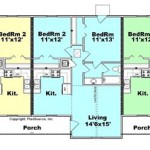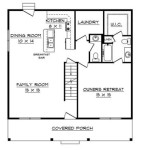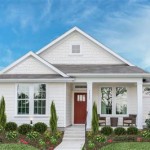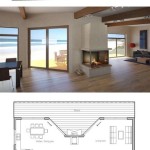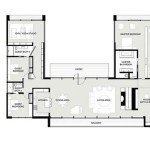Plans for a purple martin house are instructions or blueprints that guide the construction of a specialized structure designed to attract and house purple martins (Progne subis), a migratory bird species known for its aerial acrobatics and insect-eating habits. These plans typically include detailed specifications for the materials, dimensions, and design features of the house, ensuring optimal conditions for martin nesting and breeding.
Purple martins are highly social birds that live in colonies, and the provision of a well-designed martin house can enhance their reproductive success and contribute to the conservation of this species. These plans are widely available online and through specialized organizations dedicated to maintaining purple martin populations. Understanding the key elements of these plans is essential for anyone interested in building a suitable home for these fascinating birds.
When planning and constructing a purple martin house, there are several key points to consider:
- Dimensions: 20-24 inches tall, 15-18 inches wide, 12-18 inches deep
- Compartments: 6-12 compartments, each with a 2-inch entrance hole
- Ventilation: Ample ventilation holes to prevent overheating
- Drainage: Sloped floor and drainage holes to prevent water accumulation
- Predator Protection: Pole-mounted, with a baffle or guard to deter predators
- Orientation: Facing east or southeast for morning sun and protection from rain
- Materials: Durable materials such as treated wood, plastic, or aluminum
- Cleaning: Easy to clean and maintain for nest sanitation
- Location: Open area with plenty of flying space, away from trees and buildings
Following these guidelines will help ensure that your purple martin house is attractive, safe, and functional for these remarkable birds.
Dimensions: 20-24 inches tall, 15-18 inches wide, 12-18 inches deep
The dimensions of a purple martin house are crucial for providing adequate space and comfort for nesting pairs. The recommended height is between 20 and 24 inches, which allows for sufficient vertical space for the birds to move around and tend to their young. The width should be between 15 and 18 inches, providing ample room for multiple compartments and ensuring proper ventilation. The depth of the house should be between 12 and 18 inches, creating enough space for the birds to build their nests and raise their chicks.
Compartments within the house should be approximately 6×6 inches and at least 6 inches deep. Each compartment should have a 2-inch entrance hole located near the top. The size and shape of the entrance holes are specifically designed to accommodate purple martins while deterring larger birds and predators from entering the house.
Proper ventilation is essential to prevent overheating inside the house, especially during hot summer months. Ventilation holes should be placed near the top of the house, allowing for air circulation and preventing the buildup of stale air and moisture. Additionally, drainage holes should be incorporated into the floor of the house to allow rainwater to drain out, keeping the nests dry and preventing the growth of mold and mildew.
When selecting materials for the purple martin house, durability and weather resistance should be prioritized. Treated wood, plastic, or aluminum are commonly used materials that can withstand the elements and provide a long-lasting nesting site for the birds.
Compartments: 6-12 compartments, each with a 2-inch entrance hole
The number of compartments in a purple martin house can vary from 6 to 12, depending on the size of the house and the desired number of nesting pairs. Each compartment should be approximately 6×6 inches and at least 6 inches deep, providing ample space for the birds to build their nests and raise their young.
The 2-inch entrance holes are specifically designed to accommodate purple martins while deterring larger birds and predators from entering the house. The size and shape of the entrance holes are crucial for the safety and well-being of the birds.
- Multiple Compartments: Providing multiple compartments allows for several pairs of purple martins to nest simultaneously, promoting a colony-style living arrangement. This social behavior is natural for purple martins, and having multiple compartments increases the chances of attracting a larger number of birds.
- Privacy and Space: Individual compartments offer privacy and space for each nesting pair, reducing competition and potential conflicts within the house. Each pair can establish its own territory within the compartment, minimizing stress and ensuring a harmonious nesting environment.
- Compartment Depth: The depth of the compartments is important for providing sufficient space for the birds to build their nests and raise their chicks. Purple martins typically build their nests using twigs, leaves, and other materials, and adequate depth allows them to create a comfortable and secure nesting area.
- Nest Sanitation: Multiple compartments facilitate nest sanitation and maintenance. Landlords can easily inspect each compartment, remove old nests, and clean the house regularly, promoting the health and hygiene of the nesting birds.
Overall, the number and design of the compartments in a purple martin house play a vital role in attracting, accommodating, and supporting a healthy and productive colony of these fascinating birds.
Ventilation: Ample ventilation holes to prevent overheating
Proper ventilation is crucial in a purple martin house to prevent overheating, especially during the hot summer months. Ample ventilation holes should be incorporated into the design to allow for air circulation and prevent the buildup of stale air and moisture.
- Temperature Regulation: Ventilation holes help regulate the temperature inside the house, keeping it cool and comfortable for the birds. Purple martins are sensitive to high temperatures, and excessive heat can cause stress, dehydration, and even death. Proper ventilation ensures a consistent airflow, preventing the house from becoming too hot and creating a healthy environment for the birds.
- Moisture Control: Ventilation holes also aid in controlling moisture levels within the house. During hot and humid weather, moisture can accumulate inside the house, leading to the growth of mold and mildew. Ventilation allows for the circulation of fresh air, reducing humidity and preventing the buildup of harmful microorganisms that can compromise the health of the birds and their nests.
- Air Quality: Proper ventilation ensures that the air quality inside the house remains fresh and free of harmful fumes or odors. Without adequate ventilation, stale air can accumulate, potentially causing respiratory issues for the birds. Ventilation holes allow for the exchange of fresh air, maintaining a healthy and breathable environment for the colony.
- Nest Sanitation: Good ventilation contributes to nest sanitation by preventing the buildup of debris and waste inside the compartments. Proper airflow helps circulate fresh air, reducing the accumulation of feathers, droppings, and other nesting materials that can attract pests and create unsanitary conditions for the birds.
In summary, ample ventilation holes are essential for maintaining a healthy and comfortable environment inside a purple martin house. Proper ventilation helps regulate temperature, control moisture, ensure good air quality, and promote nest sanitation, all of which contribute to the well-being and success of the purple martin colony.
Drainage: Sloped floor and drainage holes to prevent water accumulation
Proper drainage is essential in a purple martin house to prevent water accumulation, which can lead to dampness, mold growth, and unsanitary conditions. A well-designed drainage system ensures that rainwater and moisture can easily drain out of the house, keeping the nesting compartments dry and comfortable for the birds.
- Sloped Floor: The floor of the purple martin house should be constructed with a slight slope, typically towards the front or back of the house. This slope allows water to drain out easily, preventing it from pooling inside the compartments. A sloped floor ensures that any rainwater or moisture that enters the house can quickly drain out, minimizing the risk of dampness and mold growth.
- Drainage Holes: In addition to a sloped floor, drainage holes should be incorporated into the design of the house. These holes should be placed near the bottom of the compartments, allowing water to drain out even if the floor is covered with nesting materials. Drainage holes are particularly important in areas with heavy rainfall or high humidity, as they prevent water from accumulating and creating an unhealthy environment for the birds.
- Nest Sanitation: Proper drainage contributes to nest sanitation by preventing the buildup of moisture and debris inside the compartments. Good drainage ensures that any droppings, feathers, or other nesting materials that may accumulate can easily drain out, reducing the risk of mold growth and attracting pests. A clean and dry nesting environment is crucial for the health and well-being of the purple martins and their chicks.
- Predator Deterrence: A properly drained purple martin house can also act as a deterrent to predators. Stagnant water or dampness can attract insects and other small animals, which may pose a threat to the birds and their nests. By preventing water accumulation, the house becomes less attractive to predators, providing a safer environment for the colony.
In summary, a sloped floor and drainage holes are essential components of a purple martin house, ensuring proper drainage and preventing water accumulation. This drainage system helps maintain a dry and healthy nesting environment, promotes nest sanitation, and deters predators, contributing to the overall well-being and success of the purple martin colony.
Predator Protection: Pole-mounted, with a baffle or guard to deter predators
Protecting purple martin houses from predators is crucial for the safety and success of the colony. Predators such as snakes, raccoons, and cats can pose a significant threat to the birds and their nests, potentially causing harm or even destroying the colony. Implementing effective predator protection measures is essential to safeguard the well-being of the purple martins.
- Pole-mounted: Mounting the purple martin house on a sturdy pole places it above the ground, making it more difficult for ground-based predators to access the nests. The pole should be at least 6 feet tall and securely anchored in the ground to prevent it from being knocked over by strong winds or predators.
- Baffle or Guard: Installing a baffle or guard around the pole below the house creates a physical barrier that prevents predators from climbing up the pole and reaching the nests. Baffles can be made from various materials such as metal, plastic, or wood and should be at least 2 feet in diameter to be effective. Guards can be cone-shaped or dome-shaped and fit snugly around the pole, providing additional protection against climbing predators.
Incorporating these predator protection measures into the purple martin house design helps deter predators, reduce the risk of nest raiding, and promotes a safe nesting environment for the birds. By keeping predators away, landlords can increase the chances of successful nesting and fledging, contributing to the growth and sustainability of the purple martin colony.
Orientation: Facing east or southeast for morning sun and protection from rain
The orientation of a purple martin house is an important consideration that impacts the comfort, health, and nesting success of the birds. Proper orientation ensures that the house receives optimal sunlight for warmth and protection from prevailing winds and rain.
- Morning Sun: Facing the house east or southeast allows it to receive the warm rays of the morning sun. This is particularly beneficial during the early nesting season when temperatures can be cold, and the chicks need warmth to thrive. The morning sun helps warm the house, creating a comfortable and inviting environment for the birds.
- Protection from Rain: Orientating the house towards the east or southeast also provides protection from rain and wind. Prevailing winds and rain often come from the west or northwest, so facing the house away from these directions helps keep the nests dry and protected. A well-oriented house ensures that the birds are sheltered from harsh weather conditions, promoting their well-being and reducing the risk of nest damage or abandonment.
- Afternoon Shade: While morning sun is beneficial, excessive heat during the afternoon can be harmful to the birds. Facing the house east or southeast ensures that the house receives shade in the afternoon, preventing it from becoming too hot and uncomfortable for the birds. The shade helps regulate the temperature inside the house, creating a more balanced and comfortable environment.
- Nest Visibility: The orientation of the house also affects the visibility of the nests from the outside. Facing the house east or southeast allows landlords and monitors to easily observe the nests and monitor the birds’ activity. This is important for nest inspections, cleaning, and providing any necessary assistance to the colony.
Overall, orienting a purple martin house towards the east or southeast provides optimal sunlight for warmth, protection from rain and wind, afternoon shade for temperature regulation, and good visibility for nest monitoring. Considering these factors when planning and constructing a purple martin house contributes to the health, comfort, and success of the colony.
Materials: Durable materials such as treated wood, plastic, or aluminum
The choice of materials for a purple martin house is crucial for its durability, longevity, and ability to provide a safe and comfortable environment for the birds. Durable materials can withstand the elements, resist decay and damage, and ensure the house remains in good condition for many years.
Treated Wood: Pressure-treated wood is a popular choice for purple martin houses due to its resistance to rot, decay, and insect damage. The pressure treatment process infuses chemicals into the wood, making it highly resistant to moisture and pests. Treated wood is a cost-effective option that can last for many years with proper maintenance.
Plastic: Plastic is another durable material that is commonly used for purple martin houses. Plastic is lightweight, easy to clean, and resistant to moisture and decay. It does not require painting or staining, making it a low-maintenance option. However, plastic can become brittle over time, especially if exposed to extreme temperatures, so it is important to choose high-quality plastic that is UV-resistant.
Aluminum: Aluminum is a highly durable and weather-resistant material that is often used for commercial-grade purple martin houses. Aluminum does not rust or corrode, and it can withstand extreme temperatures and harsh weather conditions. It is also lightweight and easy to work with, making it a popular choice for landlords who build their own houses.
In summary, treated wood, plastic, and aluminum are all durable materials that are suitable for building purple martin houses. Each material has its own advantages and disadvantages, so it is important to consider factors such as cost, durability, maintenance, and personal preference when making a decision.
Cleaning: Easy to clean and maintain for nest sanitation
Maintaining proper hygiene in purple martin houses is essential for the health and well-being of the birds. Regular cleaning and maintenance help prevent the buildup of waste, debris, and parasites, which can compromise the health of the birds and their nests. A well-designed purple martin house should be easy to clean and maintain, allowing landlords to keep the house in optimal condition for the birds.
- Removable Floor: A removable floor makes it easy to clean the house thoroughly. The floor can be taken out and hosed down or scrubbed to remove droppings, feathers, and other debris. A clean floor helps prevent the spread of diseases and parasites, and it also provides a fresh and comfortable environment for the birds.
- Smooth Interior Surfaces: Smooth interior surfaces make it easier to clean the house and prevent the buildup of dirt and debris. Rough surfaces can trap waste and make it difficult to remove, creating an unsanitary environment for the birds. Smooth surfaces can be easily wiped down or vacuumed to remove dust, feathers, and other materials.
- Accessible Compartments: Easy access to all compartments is important for regular cleaning and inspection. Each compartment should have a separate entrance hole, allowing landlords to reach inside and clean the nest without disturbing the birds. Accessible compartments also make it easier to remove old nests and replace them with fresh nesting material.
- Ventilation: Proper ventilation helps circulate air and prevent the buildup of moisture and odors inside the house. Ventilation holes should be placed near the top of the house to allow fresh air to enter and stale air to escape. Good ventilation helps keep the house dry and reduces the risk of mold and mildew growth, which can be harmful to the birds.
By incorporating these features into the design of the purple martin house, landlords can make cleaning and maintenance easier and more effective. A clean and well-maintained house provides a healthy and comfortable environment for the birds, promoting their well-being and nesting success.
Location: Open area with plenty of flying space, away from trees and buildings
The location of a purple martin house is crucial for the birds’ safety, comfort, and nesting success. Purple martins are aerial insectivores that require open areas with ample flying space to hunt for food and avoid predators. Choosing a suitable location is essential to ensure the well-being of the colony and promote successful nesting.
- Open Area: Purple martin houses should be placed in open areas with minimal obstructions. Open fields, meadows, or parks provide ample flying space for the birds to maneuver and forage for insects. Avoid placing the house near trees, buildings, or other structures that can restrict the birds’ flight paths.
- Flying Space: Ensure that the chosen location provides sufficient flying space around the house. Purple martins need room to fly in and out of the house, as well as to perform their aerial acrobatics and courtship displays. A clear area of at least 50 feet in all directions is recommended.
- Distance from Trees and Buildings: Avoid placing the purple martin house near trees or buildings. Trees can provide hiding places for predators, such as snakes and owls, and can also obstruct the birds’ flight paths. Buildings can create updrafts and downdrafts that make it difficult for the birds to land and take off.
- Predator Avoidance: Consider the potential for predators when choosing the location of the purple martin house. Predators such as cats, raccoons, and squirrels can pose a threat to the birds and their nests. Avoid placing the house near areas where predators are likely to be present, such as dense vegetation or heavily wooded areas.
By carefully selecting a location that meets these criteria, landlords can provide a safe and suitable environment for purple martins to thrive and raise their young.










Related Posts

